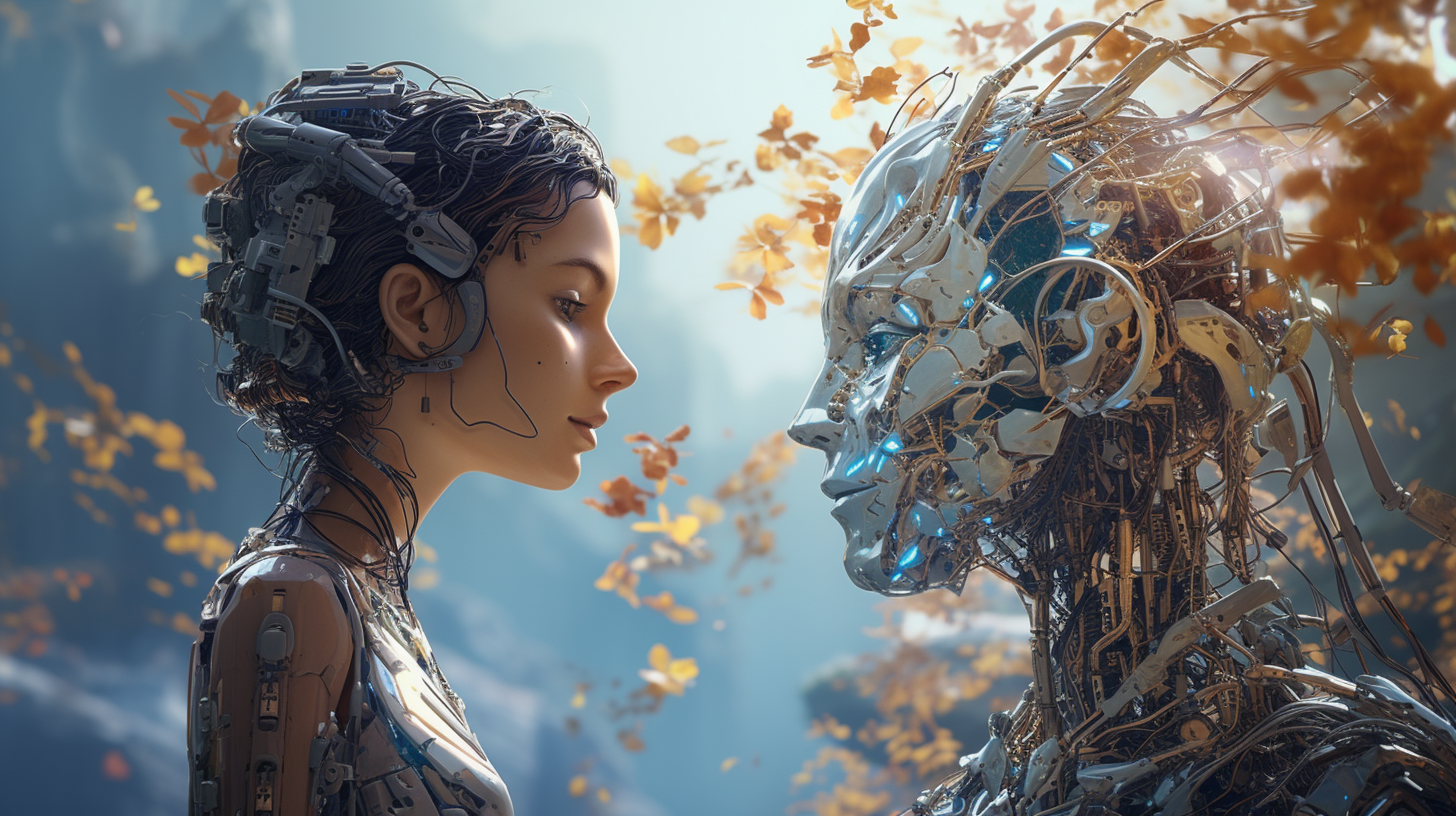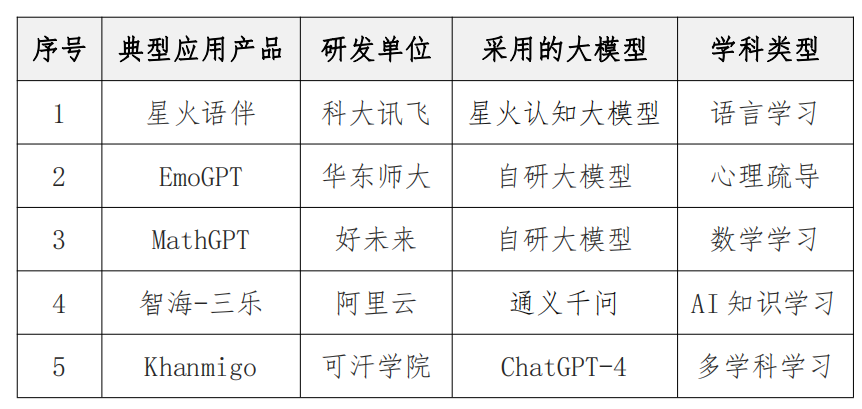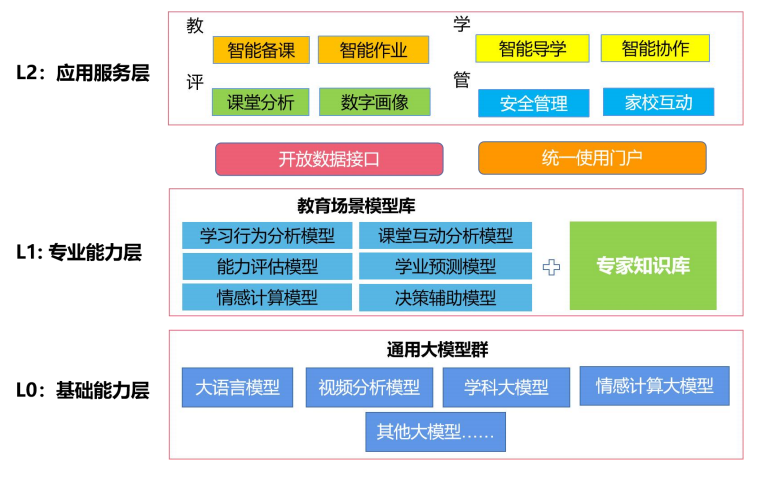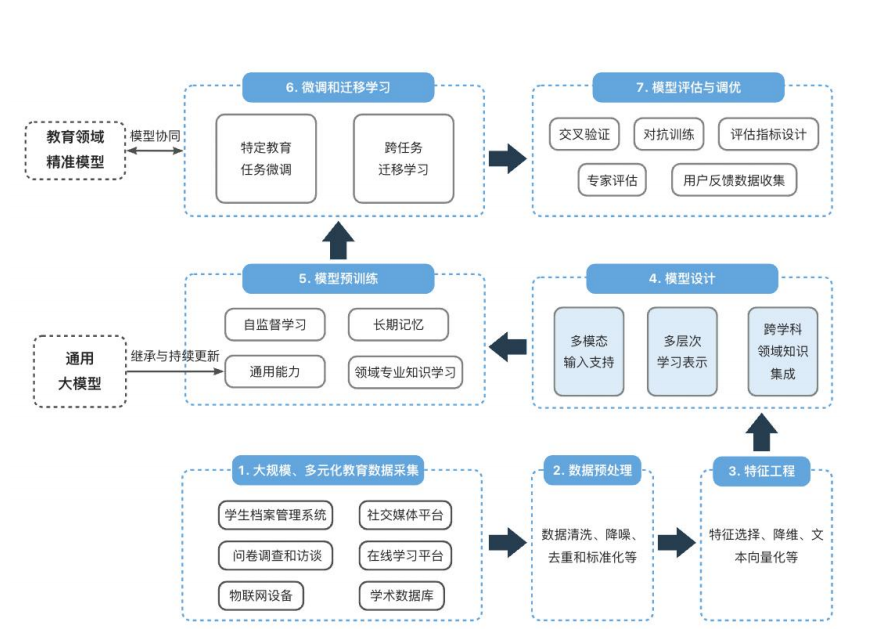Source: Duo Jing
Authors: Cao Peijie, Huang Baozhong

Image source: Generated by Wujie AI
Looking back at 2023, ChatGPT emerged, and companies at home and abroad have successively launched their own large models, joining the melee, and various intelligent education products have also landed, with the concept of AI+ education heating up. Due to the unique personalized and interactive needs of education, the education industry has become one of the most smooth landing scenes for large models. From general large models to education-specific large models, from AI concepts to actual products, how to promote the market ecology to mature?
Recently, Cao Peijie, deputy director of the Digital Education Research Institute of the China Institute of Education Sciences, and Huang Baozhong, director of the Intelligent Education Research Center of Zhejiang Lab, jointly released the "Reconstructing the Education Landscape: Research Report on Education-Specific Large Models" (hereinafter referred to as the "Report"). The "Report" focuses on education-specific large models, conducting research from aspects such as technical foundation, application status, potential challenges, innovative ideas, and landing scenarios.

"Large models" refer to artificial intelligence models with tens of billions to hundreds of billions or even more trainable parameters, which are the result of the joint development of deep learning, GPU hardware, large-scale datasets, and other technologies. The powerful capabilities demonstrated by large models are essentially the result of "quantitative changes leading to qualitative changes" in deep learning. When the number of model parameters reaches a certain scale, the model's accuracy will experience a qualitative leap, a process known as "emergent capability," which is the ability to automatically learn and discover new, higher-level features and patterns from the original training data. These capabilities are prominently manifested as general user intent understanding, powerful wide-context continuous dialogue capabilities, intelligent interactive correction capabilities, content polishing, classification and summarization capabilities, new content generation capabilities, and multimodal capabilities.
The "Report" points out that education-specific large models refer to a multi-level open technical architecture based on general large models, driven by diverse digital education applications, providing professional capabilities to teachers, students, and social learners through a unified interactive dialogue interface, possessing rich and diverse professional education knowledge, and continuously upgrading in applications. As one of the key research and development areas, education-specific large models are integrated applications of large model technology, knowledge base technology, and various intelligent education technologies, which will train and form new educational scenarios in the education process, realizing the bidirectional construction of human learning and machine learning.
Applications of education-specific large models include the generation of learning spaces, on-demand supply of learning resources, transformation and upgrading of teacher roles, inquiry-based learning, dialogue-based teaching, embedded assessment, and service-oriented governance, among other key elements.
Currently, education-specific large models mainly adopt two technical routes: one is to directly call general large models, enabling them to have certain professional capabilities through fine-tuning or prompt learning; the other is to use professional data in the education field to specifically train large models for solving educational tasks.
From the comprehensive perspective of the current industry situation, both of these technical routes have made certain progress, but the implementation effects still need to be improved. Due to the lack of sufficient professional data training, insufficient depth of education knowledge, weak intelligence, and difficulty in flexibly handling complex and changeable educational tasks.
The "Report" points out that the key to developing education-specific large models lies in integrating these two technical routes.
This is not a simple addition, but a breakthrough in technology by establishing a new open technical architecture, systematically integrating general problem-solving capabilities and education-specific problem-solving capabilities. Specifically, it is necessary to combine general large models with professional data in the education field, break data silos, and continuously obtain data from normalized education applications through open data interfaces; to use expert knowledge bases as supplements to large models, consciously "teach" various subject knowledge and teaching rules to large models; and to integrate various intelligent education technologies, integrating various intelligent education technologies that have already been developed into education-specific large models.

Large models bring great potential and possibilities to education in areas such as oral practice, mathematics learning, emotion analysis, and personalized recommendations. The "Report" outlines five typical applications of education-specific large models, providing in-depth analysis of their development background, application scenarios, and design features.

Typical applications of education-specific large models
From the perspective of application scenarios, Xinghuo Language Companion is mainly used for language learning, supporting real-time translation of multilingual texts, speech, and images, and can correct grammar errors and provide oral practice. EmoGPT is used to provide mental health services, able to identify and respond to user emotions, and provide continuous psychological support. MathGPT is aimed at global math enthusiasts and research institutions, providing problem-solving and lecture algorithms, supporting users in math problem-solving and practice. Zhihai-Sanle is used for AI professional education, providing search engines, calculation engines, and local knowledge bases, supporting intelligent Q&A and test generation. Khanmigo provides personalized learning plans for learners through dialogue-based AI chatbots, and also supports career planning services and optimization of teaching methods.
From the perspective of technological progress, education-specific large models demonstrate advantages in model performance, application scenarios, and technical characteristics, covering most subject content, mainly focusing on autonomous learning scenarios, including knowledge Q&A, language learning, learning guidance, and teaching assistance. In terms of technical routes, the "general + fine-tuning" path has proven its effectiveness, with many technical solutions based on general large models, achieving effective answers to specific subject knowledge through fine-tuning and other methods.
From the perspective of existing shortcomings, existing education-specific large models still have limitations in accuracy, diversity of teaching content, support for core educational scenarios, and inclusiveness of learner diversity, with high error rates and a lack of empathy understanding capabilities, mainly focusing on subject knowledge teaching and exam-oriented education situations, and still lacking in cross-disciplinary learning, student comprehensive ability, and high-level thinking cultivation; mainly focusing on supporting autonomous learning, how to fully leverage the role of large models in real classrooms, peer collaboration, and blended teaching scenarios has not been effectively explored.
In summary, while the application of large models in the field of education has made significant progress, it still faces practical issues, requiring further improvement in the quality and scale of training data, especially embedding the real needs of advanced educational concepts, deep educational knowledge, and core educational scenarios into technical design, and conducting multi-round iterations in combination with user feedback to form more intelligent and flexible education-specific large models.

The "Report" points out that the realization of education automation and intelligence often faces higher requirements compared to other fields. This is because most educational tasks are "non-routine" and have relatively low levels of automation. With the continuous breakthroughs of large models in imitation, generation, and creation capabilities, large models are expected to be deeply applied in the education process. As an emerging artificial intelligence technology, it is necessary to systematically evaluate the challenges that education-specific large models may face.
On the one hand, there is a blurred boundary between intelligent machines and human teachers. Educational tasks often require human wisdom, which makes the large model technology with generation and creation capabilities gradually blur the boundary between machines and teachers when undertaking complex cognitive tasks (such as artistic creation and decision-making), leading to potential over-reliance of teachers and students on large models, resulting in fragmented knowledge systems, biases, and other issues. Specifically, the powerful generation capabilities of large models simplify the process of obtaining information for teachers and students, but also magnify their inertia in exploring knowledge. Large models often provide concise and direct answers to complex problems, but these answers lack coherence and completeness, which may lead to the knowledge acquired by students being constantly fragmented.
At the same time, the dataset itself or algorithmic reasons may cause the model to have preferences or discrimination towards certain specific groups or topics, which may lead to biases in the model's output answers or conclusions.
On the other hand, there may be conflicts between general and specialized large models in terms of human values. The limited application of general large models in the field of education is mainly due to their lack of specific deep knowledge and personalized customization capabilities in the education field. These models are usually trained on extensive and general text data, which may not accurately understand specific educational terms, subject requirements, and learning patterns, leading to conflicts between the processes and results of general and specialized large models, conflicts between generation and exploration, conflicts between automation and collaboration, and conflicts between transparency and reliability. Therefore, it is necessary to customize education-specific large models based on a deep understanding of domain knowledge to provide more effective, accurate, and in-depth intelligent support.
The "Report" upholds the concept of "application-driven, co-construction, and sharing," and proposes an open and innovative architecture for education-specific large models, through integrating three technical routes: general large models, education scenario models (small models), and knowledge bases, empowering education-specific large models to various levels and types of digital education applications, making intelligent computing power accessible to every school, every classroom, and every terminal, and making generative artificial intelligence an intimate assistant for teachers and students.
The open and innovative architecture of education-specific large models is divided into three layers: basic capability layer (L0), professional capability layer (L1), and application service layer (L2). The basic capability layer (L0) is based on the basic capabilities of general large models, calling different types of large models based on diverse educational data types and task requirements. The professional capability layer (L1) includes an education scenario model library and an expert knowledge base. The application service layer (L2) integrates various digital education applications into large models, while continuously feeding application data into large models to continuously enhance the educational professional capabilities of large models.

Open and innovative architecture of education-specific large models
Education-specific large models are not a single, closed model, but a process of continuous improvement involving developers and users. Teachers, students, and developers of various digital education products are not only users of the model but also contributors and builders of the model, forming a co-construction and sharing innovative ecosystem for education-specific large models. The technical route of education-specific large models includes seven key steps: large-scale diverse education data collection, data preprocessing, feature engineering, model design, model pre-training, fine-tuning and transfer learning, model evaluation, and tuning.

Technical route of education-specific large models
Education-specific large models will turn the concept of "learner-centeredness" into a universal reality. In early childhood education, this mainly manifests as respecting and empowering children, emphasizing the cultivation of children's autonomy and creativity; in basic education, it mainly shifts from lecturing and indoctrination to deep understanding and research-based learning, emphasizing the establishment of the learner's subjectivity; in higher education and vocational education, it mainly focuses on student development, emphasizing the integration of teaching and industry, and in lifelong education, it mainly focuses on learner-oriented learning needs, with a focus on solving the problem of matching high-quality educational resources supply and demand.
In the future, artificial intelligence large models will be deeply integrated into various fields and processes, empowering intelligent upgrades across various industries and sectors, and boosting social productivity. The shift from general large models to education-specific large models is an important trend in the deepening development of artificial intelligence large model technology. This is not just about fine-tuning and optimizing based on general large models, but a major innovation based on educational scenarios and open model architecture. At the same time, it is also an important driving force for promoting digital education reform and advancing the fairness and universalization of education.
免责声明:本文章仅代表作者个人观点,不代表本平台的立场和观点。本文章仅供信息分享,不构成对任何人的任何投资建议。用户与作者之间的任何争议,与本平台无关。如网页中刊载的文章或图片涉及侵权,请提供相关的权利证明和身份证明发送邮件到support@aicoin.com,本平台相关工作人员将会进行核查。




